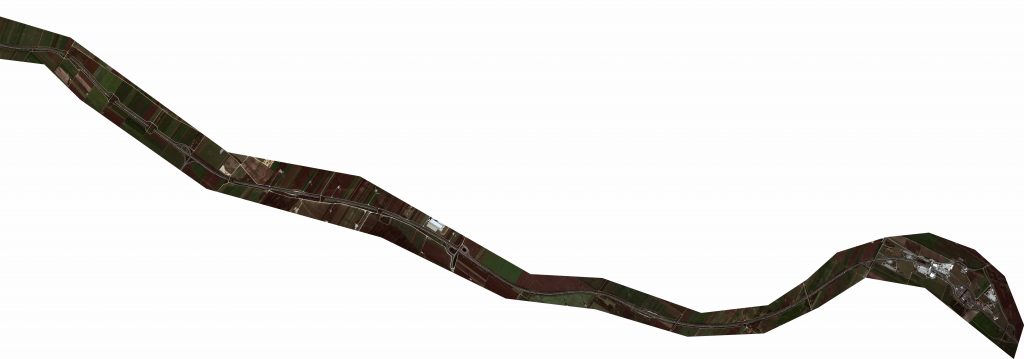EU Commission Asks EO Community for Help With COVID-19
- Skye Boag, Marketing Manager at European Space Imaging
On Friday, 27 March, DG DEFIS (European Commission Department for Defense Industry and Space) issued an urgent request for Earth Observation resources that could provide insight into the economic and logistical impact of COVID-19.
In response to the COVID-19 threat, national governments have taken rigorous measures to contain the spread of the virus and to protect their citizens. This has had significant effects on travel and supply chain logistics which in turn, carry heavy economic consequences. In an effort to monitor the situation using all available resources, the EU Commission has requested that any and all remote sensing data related to the pandemic please be shared for research purposes.
European Space Imaging was already actively collecting imagery of Coronavirus related sites for some European organisations and media outlets prior to this request. This put us in a unique position to rapidly supply data pertaining to airport activity, border crossings and temporary medical facility construction around Europe.
Drive-Through Testing Facilities in Munich, Germany
European Space Imaging collected imagery on Thursday March 19 2020 of the COVID-19 drive-through testing facilities currently erected at Theresienwiese in Munich, Germany to gain awareness on the impacts and actions taken in regards of the current COVID-19 crisis. The imagery was captured with WorldView-3 at True 30 cm in full colour. It shows the six drive-through testing tents and over 60 cars waiting in line for testing. Testing at this facility is only open to people who have a reasonable suspicion of Corona Virus infection as deemed by the Statutory Health Insurance Physicians in Bavaria (KVB).
Activity at Six of Europe’s Busiest Airports
European Space Imaging collected imagery on Thursday 26 March 2020 of several airports throughout Europe. The imagery was captured with WorldView-3 at True 30 cm and GeoEye-1 at 50 cm in full colour. It highlights excess grounded planes at Heathrow Airport (London, UK), Charles De Gaulle Airport (Paris, France), Schiphol Airport (Amsterdam, The Netherlands), Madrid-Barajas Adolfo Suárez Airport (Madrid, Spain), Frankfurt Airport (Frankfurt am Main, Germany) and Copenhagen Airport (Copenhagen, Denmark).
These images highlight the economic crisis that has affected the aviation transport sector since the outbreak of COVID-19 with revenue not only down for airline carriers but also the park companies attached to the airports. Whilst the carparks appear to be almost empty some airports are still operating in limited capacities as can be seen at Frankfurt Airport with a plane midair in takeoff. Satellite imagery can be used by airport operations management to estimate total aircraft parking facilities available at the airport to safely and economically maximise available space.
Traffic Jams at Border Crossings
Over the past days travel restrictions have caused traffic jams of dozens of kilometers and more than 24 hours of waiting time at certain border crossings, thus putting the free and speedy exchange of goods as well as the freedom of travel within the Union at risk.
In support of the Copernicus Emergency Management Service (EMS), European Space Imaging collected full colour satellite imagery with the WorldView satellite constellation at 50cm and better, of several motorways at border crossings between France, Germany and Switzerland as well as between Austria, Slovakia and Hungary over the past days. The imagery shows high traffic congestion along the Hungarian Austrian Border up to 32km long and moderate traffic congestion for the other locations.
This imagery and has been made available to European political decision makers to support situational awareness in order to find a fast, common European solution for the traffic issues, assisting to keep the balance of protecting citizens while at the same time ensuring the required exchange of goods and freedom of travel within the Union.

Zoom and Drag to follow the the 32 km long traffic jam at the Hungary – Austrian Border captured on 27 March 2020
The imagery that European Space Imaging has supplied for DG DEFIS acts as an input for researchers and decision makers from European institutions and plays a major role to gain better insights on the effects and to plan measures. We are committed to monitoring significant events around Europe and the globe in order to provide meaningful data for government bodies, research institutions and media outlets.
For more information on how satellite imagery plays a role in large scale emergency situations, please visit our Emergency Management page.
Related Stories

GEOSeries: Extracting Insights From High Resolution SAR Imagery for Time-Sensitive Analysis
In this webinar, industry experts and advanced users of Umbra SAR data showcase how they transform SAR imagery into actionable insights in real-world mapping, monitoring and intelligence applications. See how NV5 and Umbra leverage ENVI SAR Essentials for advanced processing with time-efficient results, converting analytics into valuable intelligence.

Using Satellite Imagery to Build Water Resilience Across Europe
Water across Europe is facing severe pressure. Climate change, urbanisation, agricultural demands and other sources of pollution are threatening water security and creating critical challenges that need to be addressed. We have to act quickly, build stronger systems and create sustainable water resilience practices – so that both natural ecosystems and human communities can thrive. Here is how satellite imagery from EUSI can help.

EUSI and Albedo Partner to Deliver 10 cm Resolution Satellite Imagery to Europe
It is our pleasure to announce the partnership with Albedo, a builder of high-performance spacecraft and the first satellite designed to operate commercially in VLEO (Very Low Earth Orbit). This partnership will bring the world’s highest resolution satellite imagery to the European and North African market.

Updating the Land Parcel Identification Systems in 2025: The Benefits of Using Satellite Images
Agricultural paying agencies across Europe face increasing challenges in maintaining accurate and up-to-date Land Parcel Identification Systems (LPIS), ensuring compliance with the Common Agricultural Policy (CAP) and supporting sustainable agricultural practices.





